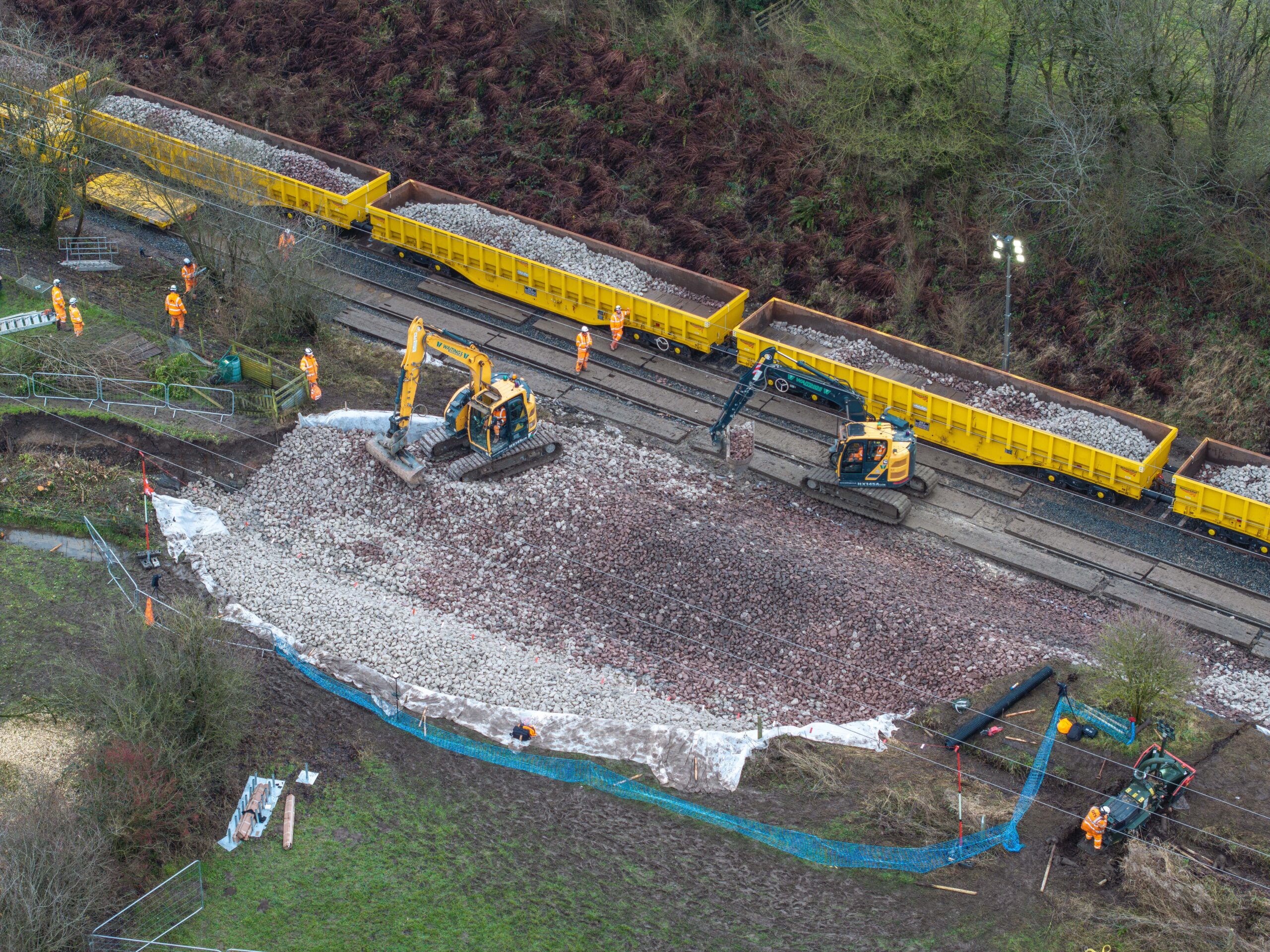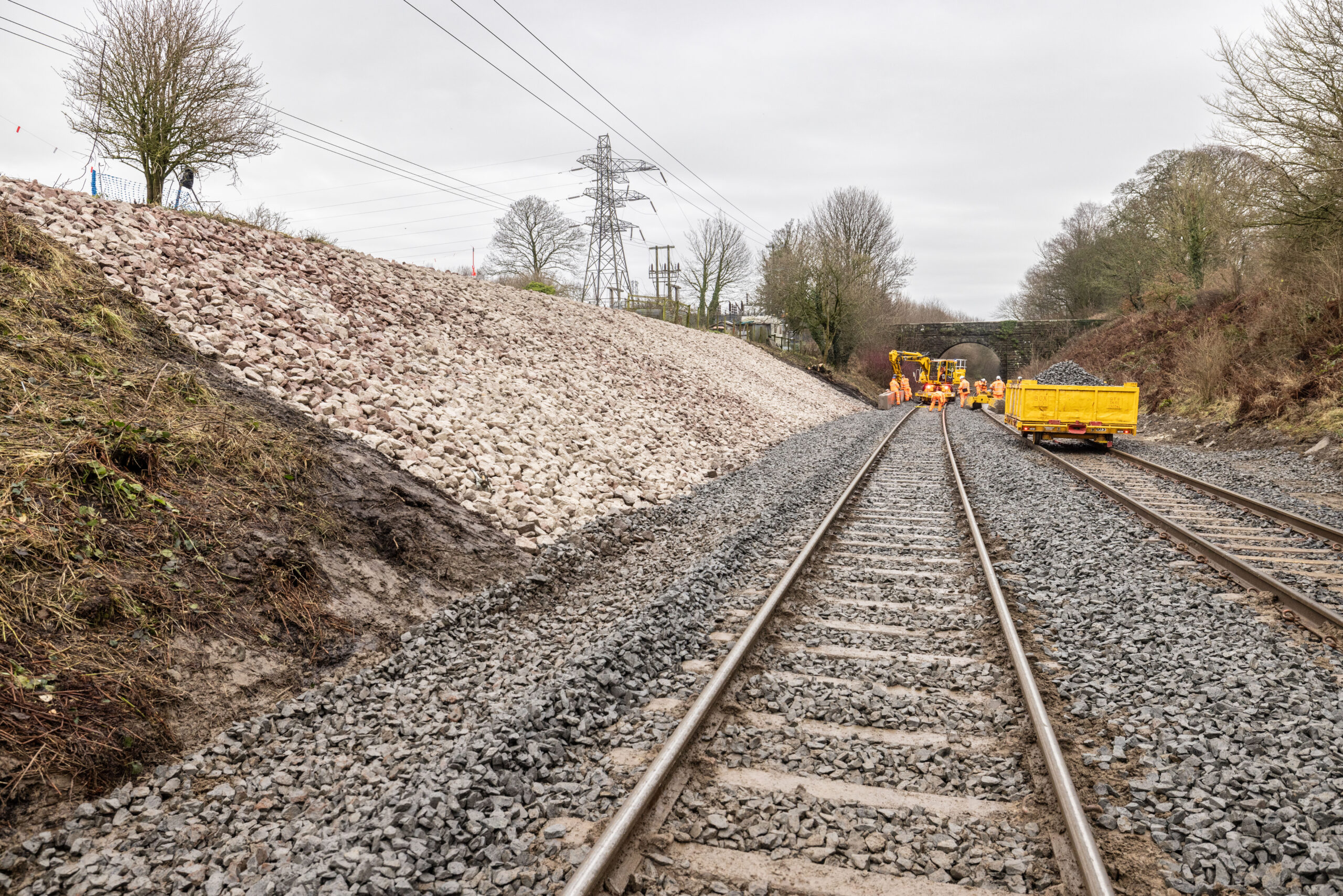These emergency geotechnical works were completed with no accidents or incidents, the track fully re-opened, slope regraded and 130m of new beck created in less than 26 days, with rail closures of only five days to mitigate impact on travelling passengers.

Ulverston
In November 2024, intense rainfall from Storm Bert impacted a section of the CBC railway line near Ulverston, Cumbria.
The beck flow increased hugely, forcing the water to infiltrate this cutting. This caused the slope to saturate and ultimately collapse onto the railway. The beck itself was also diverted onto the tracks through and down the failed cutting scar, completely blocking the line and flooding the nearby station.
QTS, assisted by Fairhurst, were called to an emergency site inspection, mobilising within two hours of the event. Around 1500t of material had failed and the beck was flowing at a rate of 500l/sec into the cutting, overwhelming the existing drainage.
Within a day, the team undertook intrusive ground investigation, while access and logistics were explored. 200m of a highly innovative temporary flume channel and an over-pumping system capable of diverting 2,100l/sec were implemented to tackle the continued flow from the beck, supplemented with remote flow monitoring and a detailed weather forecast review.
This facilitated the detailed inspection of the failure areas, consideration of the failure mechanism, review of construction constraints and the clear up at track level using QTS specialist track mounted plant – allowing Network Rail to reopen the line under an emergency speed restriction in just three days.
750 cubic metres of material had to be removed and then replaced using 6G stone. The banking was built up in layers using geogrid.
All works necessitating rail access were fully completed within a 52h blockade.
The logistics of the main works were enhanced by the use of engineering trains to deliver engineering fill and remove spoil in a single trip. This saved over 700 lorry journeys and negated heavy duty temporary access roads.
To re-establish the line of the beck, a channel was introduced using a geosynthetic clay liner (GCL), more generally seen in landfill, as an underlying impermeable membrane.
These emergency geotechnical works were completed with no accidents or incidents, the track fully re-opened, slope regraded and 130m of new beck created in less than 26 days, with rail closures of only five days to mitigate impact on travelling passengers.


















